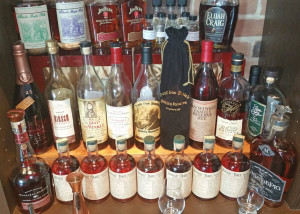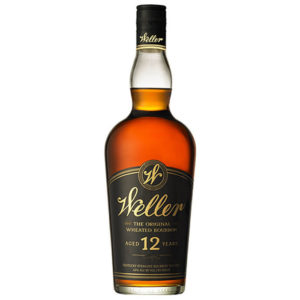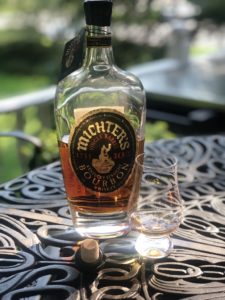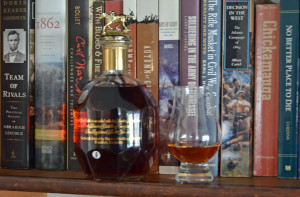The Problem Isn’t The Secondary Market Anymore. It’s The Retailers.
By Richard Thomas
Whenever the subject of the spiraling cost for limited edition whiskeys has come up during the last decade, someone always curses “the secondary market.” Lately, it has even become the villain for why brands like Blanton’s are no longer available on store shelves.
So what, exactly, is the secondary market? It is the marketplace for any transaction that takes place without a formal retailer making the sale at a named, fixed price. One thing that is often forgotten, most especially by people who ought to know the business better, is that auctions are the largest part of the secondary market. Auctions have, in fact, done much to drive up the prices of rare whiskeys in the 21st Century. But usually when someone gripes about the secondary market, they mean illicit, person-to-person sales.
And yes, selling liquor without a license is a misdemeanor-level crime. For those of you who don’t realize how serious a misdemeanor can be, in my home state of Kentucky the first offense of selling liquor without a license is a class B crime, equivalent to prostitution; resisting arrest; and a first-time DUI arrest. Those flippers out there who take their bottle of Pappy van Winkle 23 Year old, acquired through connections at their favorite liquor store for the MSRP price, and resell it for $5,000 are breaking a law with some teeth on it.
The bottle flippers were the principle culprit in ridiculous pricing several years ago, but their impact was limited to select ultra-aged expressions for the most part. These were the people who put the four-figure price tags on Pappymania and made acquiring a bottle of Elijah Craig 18 or 23 Year Old a dear proposition. This then extended to other Buffalo Trace expressions, as an outgrowth of Pappymania. The prime example of this is when the late Josh Ozersky labeled Weller 12 Year Old “Baby Pappy,” roping it and eventually all Weller expressions into the fevered demand for anything named Van Winkle.
But by and large, the price pressure created by the bottle flippers left the rest of the market unaffected. The market value — what retailers actually charged — was not that far removed from the MSRPs for most limited whiskeys, even if demand swept them off the market in a matter of days or even hours. Unaffected until recently, that is.
A Lesson In Pricing, Black Markets, And Price Gouging
W.L. Weller 12 and Michter’s 10 Year Old Bourbon make for a good comparison point, and the story of that comparison is indicative of what has happened with pricing in recent years. After Weller 12 became “Baby Pappy,” it disappeared from brick and mortar liquor store shelves, and could only be had on demand at bars or with online retailers. Although the official price was a laughable $40, the market value soon skyrocketed to double that, following the lead of the secondary market. Just a few years ago, the market value of Weller 12 had climbed to $150 a bottle.
Michter’s 10 Year Old Single Barrel Bourbon, on the other hand, had an MSRP of $130 in 2019. By and large, it could be had at that price or for slightly more, and could actually be had at liquor stores (albeit from within the specialty cabinet). This was not an item the bottle flippers were interested in, precisely because there was so little profit to milk from it.
This is where I must lay a large measure of the blame for the very existence of the secondary market and the high prices originating there at the doorstep of a heretofore unnamed culprit: Sazerac. Every student in basic macroeconomics learns about the market relationship between pricing and scarcity. In a mismatch between supply and demand, prices rise or fall until equilibrium is reached and the market thereby regulated. Sazerac continued to apply MSRPs to bottles that were in very high demand, creating an opening for bottle flippers to exploit. By not raising their prices to approximate the real market value of their products, they cleared space for a black market to set up shop and hawk their wares for resale.
But starting two and a half years ago, the market value of Michter’s 10 Year Old Bourbon began climbing far beyond its official price. For the 2020 edition the MSRP remained $130, but the market value was already $240 in January and finished the year at $297. It now sits at $340. Bottle flippers didn’t drive that price up. Retailers did.
If that sounds unreasonable, what has happened with Angel’s Envy Cask Strength is insane. Start by considering that the expression is merely the barrel proof version of the normal Angel’s Envy, although in recent years it has been given a shorter secondary maturation in the brand’s signature Port casks to dial back the Port influence. The company makes no claim to extra aging, just extra strength.
A decade ago, the MSRP was $149, and generally speaking retailers charged that or slightly more. The next year, the official price was stable and the market value was about +$20 more. In 2016, the MSRP was hiked to reflect that, up to $179. The secondary market had little traction to work with for Angel’s Envy Cask Strength nationally, and steep mark-ups were seen only in certain hot urban markets, like New York. That stability continued as the price climbed up to $200.
The MSRP for Angel’s Envy Cask Strength 2021 is $229. But at the start of 2020, online retailers were demanding $298 a bottle for it, and today they are asking an outrageous $440.
The Great Price Gouge
The spiraling prices on all annual limited edition whiskeys and the disappearance of Blanton’s and other rather ordinary Buffalo Trace brands from store shelves began in during the winter of 2019-20, but it is not a universal phenomenon. 17 states and certain local jurisdictions are control states, where the retail liquor business is operated by the state government. As you can see by looking at the retail storefronts for Virginia or Pennsylvania, those scarce whiskeys are available at MSRP, but are only available either by lottery or in-store purchases, one bottle per customer.
I know of several scrupulous retailers, none of whom has an online business, who sell scarce bottles at MSRP or slightly higher. Counter-intuitively, those scarce bottles sit in their locked display cabinets for weeks before purchase! These facts underline how it isn’t the secondary market or retailers in general, but in particular the retailers with a national, online business that are largely responsible for the present round of price gouging.
Watching how Blanton’s pricing has behaved with the major American liquor chains and online retailers, there are two general observations I can share. First, the price for a regular bottle of Blanton’s varies wildly and no median point really exists. In other words, there is no agreement among the merchants on how much that bottle is actually worth. Second, at no time has it ever been out of stock with anyone I have kept under observation. In a situation of genuine demand-driven scarcity, the sole justification for charging $300 for a bottle of Blanton’s would be that it was indeed out of stock for most of the year, and sold out instantly upon becoming available.
Awareness that what is going on in the American whiskey marketplace is more complicated than scarcity or supply and demand is growing, but many continue to blame “taters” (well-heeled buyers with no taste) and the secondary market. It has become increasingly clear that conversation on this topic should also include terms like “extortionate pricing” and “hoarding.”
 The Whiskey Reviewer A World of Whiskey, Poured Every Weekday
The Whiskey Reviewer A World of Whiskey, Poured Every Weekday




